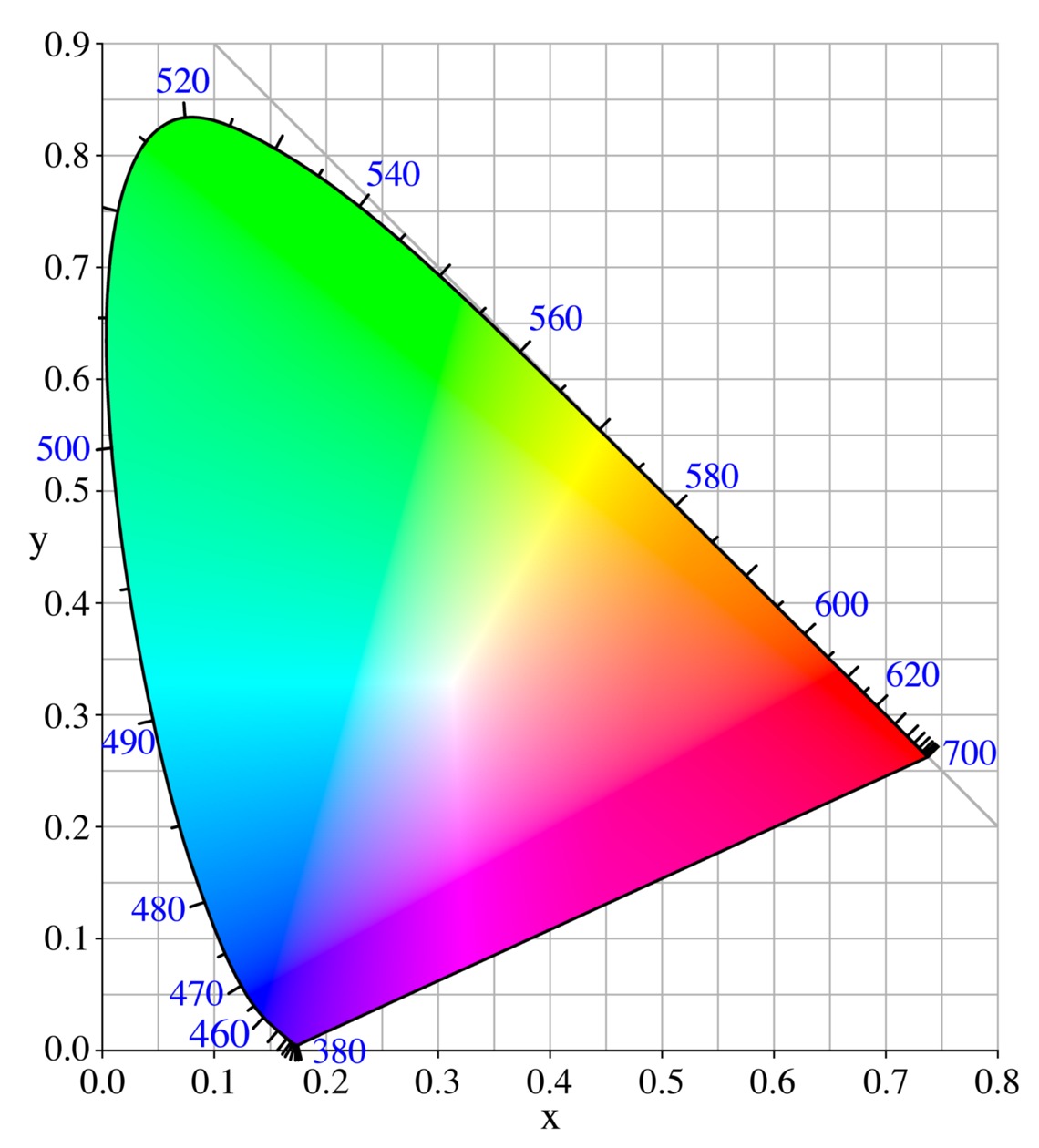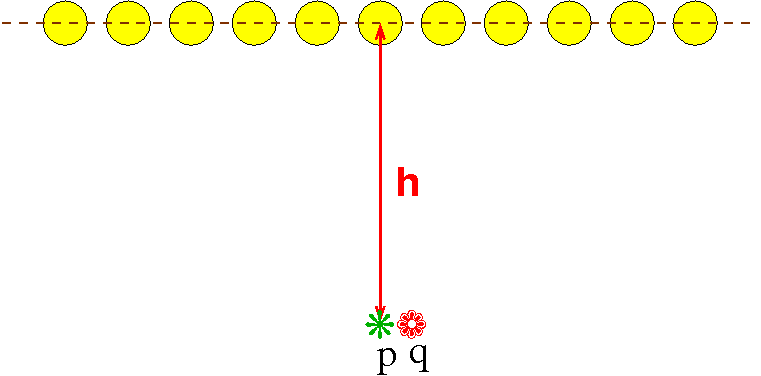Homework 7, due Wed 10/23/13
Hand in your solution on RPILMS. Each team should submit their solution under only 1 student's name. The other student's submission should just name the lead student. (This makes it easier for us to avoid grading it twice.) For programming exercises, hand in code and screen dumps. We won't run your code, but will use the screendumps to judge how it worked.
This homework has no programming. Use any tool that you wish for the multiplications, e.g., Maple or Mathematica. Include a copy of the relevant part of the session.
- (2 pts) On the following CIE chromaticity diagram what are the coordinates of
- spectrally pure orange?
- spectrally pure 4800 Angstroms?

- (6 pts, this question will take some thinking).
Imagine that you have an infinitely large room illuminated
by one infinitely long row of point lights. This figure
shows a side view of the room.
The lights are h above the floor and are 1
meter from each other. Assume that the ceiling above the
lights is black and that no light reflects off of anything.
An object at distance d from a light gets illuminated
with a brightness {$ \frac{1}{d^2} $}.
Each point on the floor is illuminated by all the lights,
but more brightly by the closer lights.
A point p directly below a light will be a little
brighter than a point q halfway between two such
points. That is the problem --- we want the floor (at least
the part directly below the line of lights) to be evenly
lit, at least within 10%.
However, the higher the line of lights, the more evenly the
floor will be lit.
Your question is to tell us what is the minimum value for
h so that the line of the floor below the line of
lights is evenly lit within 10%.
E.g., the brightness at p is {$$ \sum_{i=-\infty}^{\infty} \;\;\; \frac{1}{h^2+i^2} $$}

- This question is about a 2D cartesian cubic Bezier curve with control
points P0(0,0), P1(1,1), P2(0,1) and P3(1,0).
- (2 pts) Give the coordinates of the points with t= 0, 1/4, 1/2, 3/4, 1.
- (2 pts) Sketch the curve.
- (4 pts) You want to have a second cubic Bezier curve with control points Q0, Q1, Q2, Q3 join onto the end of the first curve, so that the joint is invisible. What must Q0 and Q1 be?
Total: 16